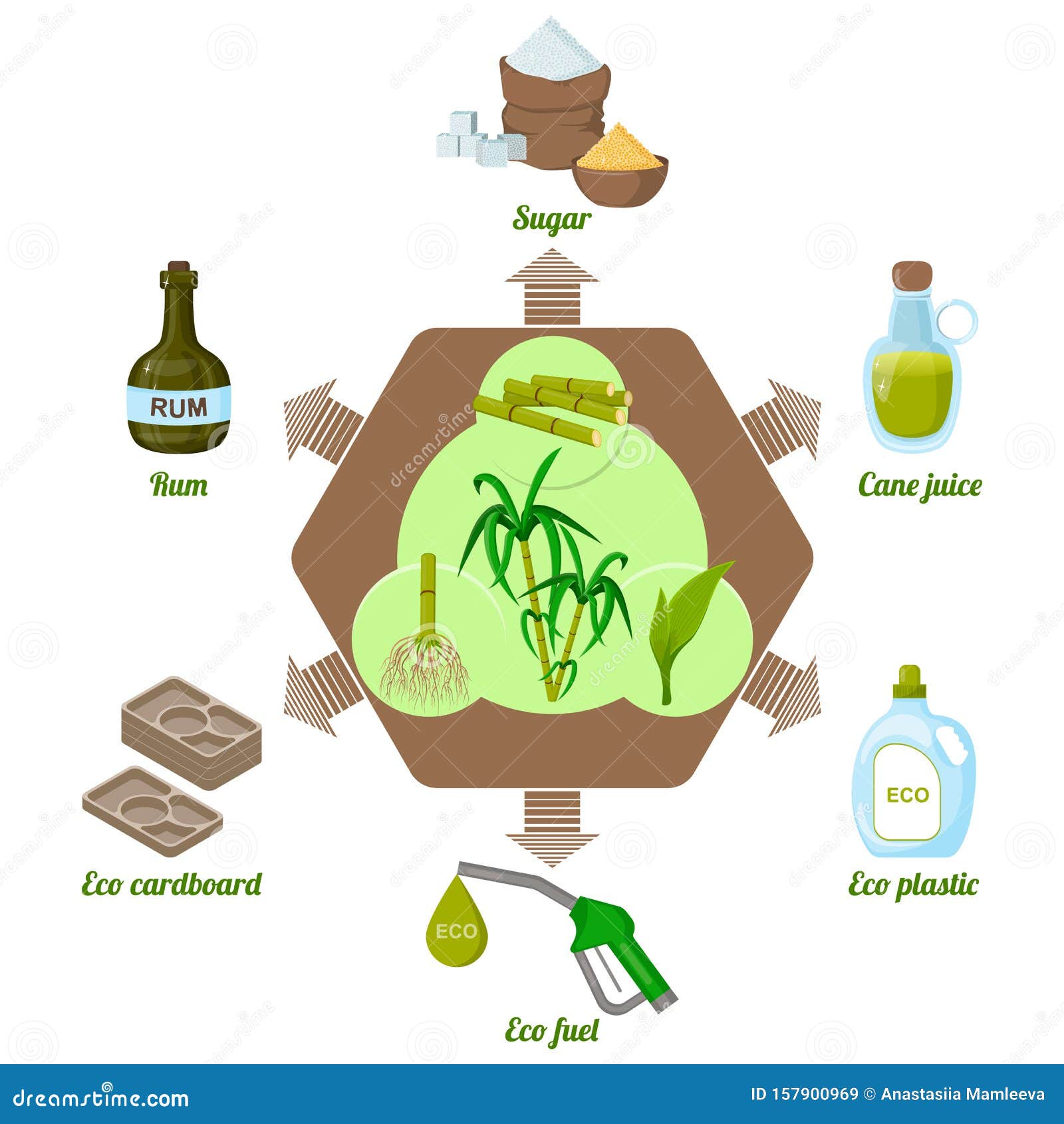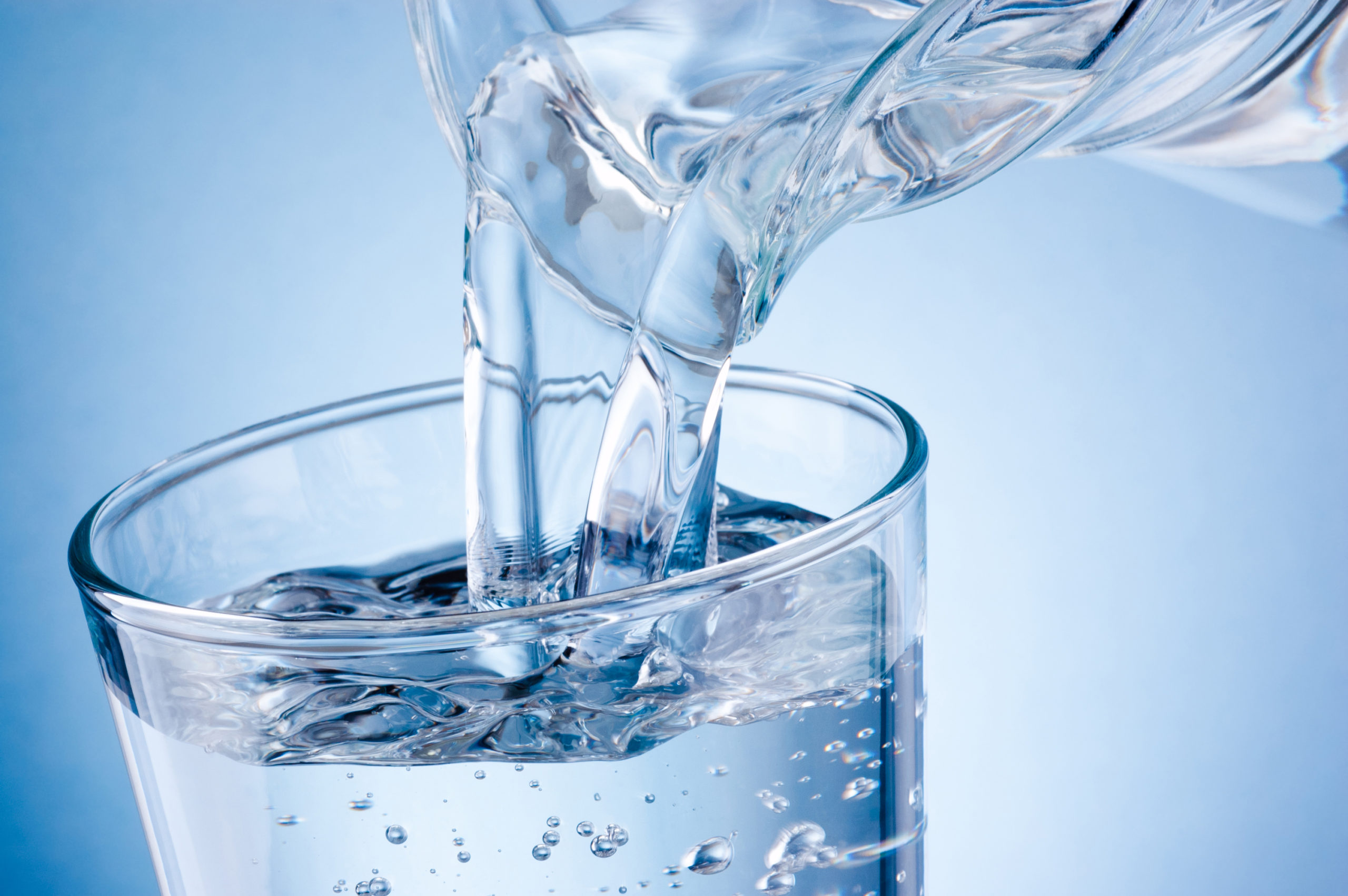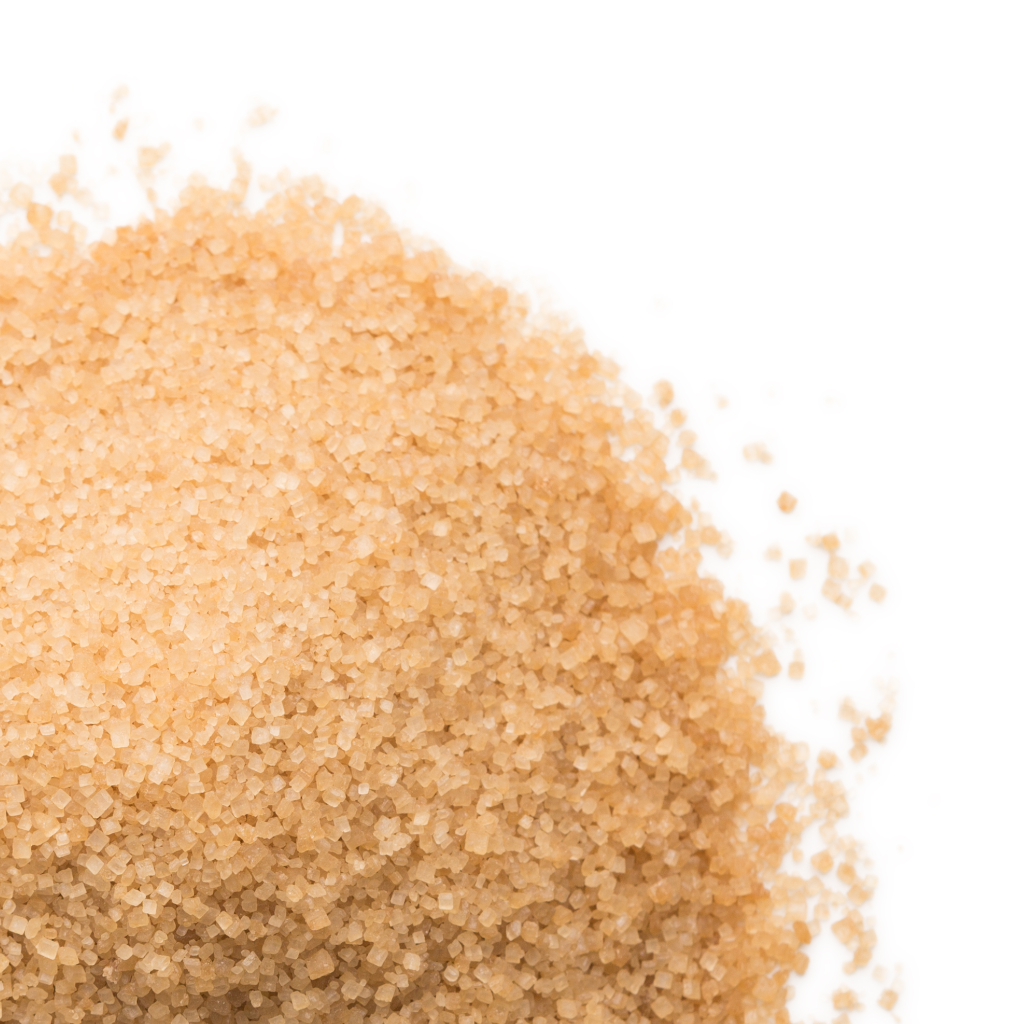The Environmental Impact of sugar cane products and How We Can Adapt
The Comprehensive Trip of Sugar Cane: Recognizing Products and Production Methods
The journey of sugar walking stick is an intricate procedure that starts in tropical regions with excellent growing problems. Farming practices are created to maximize yield and sustainability. Harvesting techniques vary from traditional manual strategies to modern mechanical approaches. After harvest, sugar walking cane undertakes numerous handling phases to change it right into granulated sugar. This expedition discloses not just the complexities of production but also the more comprehensive ramifications for international markets and the atmosphere. What lies yet first makeover?

The Background of Sugar Cane Growing
Although sugar walking cane growing days back thousands of years, its beginnings can be traced to the exotic regions of Southeast Asia, where very early farmers first recognized the plant's pleasant sap. This exploration caused the cultivation of sugar walking stick as a staple plant, gradually spreading out to India and the Center East. By the first millennium advertisement, sugar walking stick was being cultivated in these regions, where techniques for removing and fine-tuning sugar were developed.The plant obtained prominence in Europe throughout the Campaigns, as returning soldiers brought understanding of sugar production back home. By the 15th century, the establishment of sugar vineyards started in the Caribbean, driven by the demand for sugar in Europe. The transatlantic slave labor fueled this growth, as confined labor was utilized to make best use of production. Over centuries, sugar walking stick growing advanced, influencing economic situations and cultures worldwide, making it a considerable agricultural product.
Expanding Conditions and Agricultural Practices
The successful growing of sugar walking cane counts greatly on certain growing problems and farming methods. Perfect temperatures range between 20 to 32 degrees Celsius, with well-distributed rainfall of 1,500 to 2,500 millimeters annually. Dirt high quality is important; loamy or sandy soils, abundant in organic matter, promote healthy and balanced growth.Farmers usually employ numerous farming practices to improve yield. Plant rotation and intercropping prevail approaches to preserve dirt fertility and control insects. Regular irrigation might be required in drier regions, ensuring that the plants receive appropriate moisture. Fertilization, particularly with nitrogen and potassium, is essential for durable growth.Pest and weed management techniques, including integrated bug administration (IPM), assistance to minimize losses. Lasting methods, such as very little tillage and natural farming, are acquiring grip among manufacturers to shield the atmosphere. Jointly, these factors contribute considerably to the successful production of sugar walking cane.
Collecting Strategies and Timing
In sugar cane production, the choice in between guidebook and mechanical harvesting substantially influences performance and yield. Timing is also crucial, as harvesting at the excellent minute warranties maximum sugar web content and lessens losses. Comprehending these aspects is crucial for effective sugar cane farming.
Guidebook vs. Mechanical Harvesting
Gathering sugar cane includes 2 primary approaches: guidebook and mechanical, each with distinctive advantages and obstacles. Hands-on harvesting, generally carried out by workers making use of machetes, permits for greater accuracy in cutting and decreases damage to the plant. It is frequently favored in regions with unequal surface or where the crop is interspersed with other plants, as employees can browse these complexities better. It is labor-intensive and taxing. On the other hand, mechanical harvesting utilizes specialized machines to reduce and collect the walking stick rapidly, boosting performance and decreasing labor prices. This method is fit for large-scale operations but can result in greater crop damage and soil compaction. Ultimately, the choice between handbook and mechanical harvesting depends on various variables, including economic considerations and ecological problems.
Optimum Collecting Timing
Picking the appropriate moment to harvest sugar walking stick substantially influences both return and top quality. Suitable gathering generally occurs when the cane gets to full maturity, generally in between 12 to 18 months after planting. At this stage, sucrose degrees top, making sure the most effective sugar removal prices. Climate condition additionally play an important role; gathering throughout dry durations can protect against damage to the cane and minimize soil compaction. In addition, checking the plant's shade and leaf decrease can suggest readiness, as a yellowing of the fallen leaves recommends that the walking stick is ripe. Timely harvesting is vital, as delays can result in reduced sugar content and increased sensitivity to parasites and illness, ultimately influencing overall production effectiveness.
Processing Techniques: From Cane to Sugar
The processing of sugar walking stick involves vital extraction methods that separate the juice from the fibrous plant material. Complying with extraction, the refining process transforms the raw juice into taken shape sugar, making sure purity and quality. Understanding these approaches is important for understanding the trip of sugar from cane to end product.
Extraction Methods Summary
Removal strategies play a substantial duty in transforming sugar walking cane into useful sugar. The cane is collected and transferred to processing facilities where it goes through Find Out More comprehensive washing to remove contaminations - sugar cane products. The next step includes squashing the cane utilizing heavy rollers, which releases the juice having sucrose. This juice is then clarified through the enhancement of lime and warmth, allowing impurities to clear up out. After clarification, the juice is vaporized under regulated temperature levels to concentrate the sugar content. Ultimately, crystallization takes place, where sugar crystals are formed as the focused juice cools. These strategies guarantee the efficient removal of sugar while preserving the top quality needed for further processing. Comprehending these approaches is crucial for comprehending the general production of sugar from sugar walking stick
Refining Process Explained
Refining sugar from the extracted juice is a critical step that improves its purity and top quality. This process includes several phases, starting with explanation. The juice is warmed and treated with lime and other representatives to remove contaminations, causing a more clear fluid. Next off, the made clear juice undertakes dissipation, where water is eliminated to concentrate the sugar content. The concentrated syrup is after that taken shape by cooling down, enabling sugar crystals to develop. These crystals are divided from the remaining syrup, recognized as molasses, through centrifugation. Lastly, the raw sugar is additional refined via washing, filtration, and drying out, which gets rid of any continuing to be impurities. The end item is the granulated sugar frequently made use of in houses and sectors worldwide, ensuring uniformity and sweetness.
Lasting Practices in Sugar Cane Production
Sugar walking stick production has generally depended on intensive farming approaches, there is an expanding emphasis on lasting techniques that promote environmental health and financial viability. Farmers are increasingly taking on strategies such as plant rotation, which enhances dirt fertility and minimizes parasite invasions. Integrated bug management (IPM) is likewise gaining grip, permitting for all-natural predators to regulate pest populaces, therefore decreasing chemical pesticide use.In addition, improvements in watering approaches, such as drip irrigation, are being used to preserve water resources. Sustainable land monitoring practices, consisting of minimized tillage, aid prevent soil disintegration and keep biodiversity. Furthermore, numerous manufacturers are checking out natural farming approaches, which shun artificial fertilizers and chemicals altogether, promoting a much healthier ecological community.
The Worldwide Sugar Market and Economic Effect
Lasting methods in sugar walking stick production not only benefit the environment yet additionally affect the dynamics of the worldwide sugar market. As consumer need changes in the direction of morally created products, countries adopting sustainable approaches obtain competitive advantages. This fad prompts major sugar merchants, such as Brazil and India, to incorporate environmentally friendly practices, therefore influencing worldwide pricing and supply chains.Moreover, variations in production because of climate change and ecological laws can cause volatility in sugar rates, affecting economic situations reliant on sugar exports. Regions that invest in see it here sustainable farming might experience boosted return security, leading to far better market positioning.Economic impacts extend beyond specific countries, as global trade arrangements and tolls shape the competitive landscape. Eventually, the interaction in between lasting practices and market characteristics emphasizes the value of adaptive strategies in a rapidly transforming economic environment, influencing both producers and customers in the worldwide sugar market.
Developments in Sugar Cane Usage and Results

As the demand for sustainable sources grows, innovations in sugar walking stick use and by-products are transforming the farming landscape. Scientists and business owners are discovering novel applications that extend past conventional sugar production. One significant growth is the conversion of bagasse, the coarse residue left after juice extraction, into bioenergy and bioplastics (sugar cane products). This not only decreases waste however likewise supplies lasting power options for processing facilities.In enhancement, innovations in fermentation technology have actually led to the production of biofuels, such as ethanol, from sugar walking stick, which contributes to cleaner power solutions. The removal of molasses has actually opened up methods for developing value-added items like animal feed and specialty spirits.These developments not only boost the financial stability of sugar cane farming yet likewise promote pop over to this web-site ecological sustainability, making sugar cane an essential plant in the change in the direction of a circular economy. The recurring expedition of its potential proceeds to produce promising outcomes
Frequently Asked Concerns
What Are the Health Results of Consuming Sugar Cane Products?
The health impacts of consuming sugar walking cane items can differ. While they supply energy and crucial nutrients, excessive usage might result in weight gain, increased blood sugar levels, and a higher danger of dental problems. Moderation is crucial.
Exactly How Does Environment Adjustment Impact Sugar Cane Production?
Climate adjustment substantially influences sugar walking stick production by altering rainfall patterns and increasing temperatures. These adjustments can bring about minimized returns, increased bug pressures, and challenges in preserving dirt health and wellness, eventually influencing both top quality and quantity of harvests.
What Is the Duty of Sugar Cane in Biofuel Production?
The role of sugar walking cane in biofuel production is considerable; it functions as an eco-friendly power resource, converting sugars into ethanol. This process decreases reliance on nonrenewable fuel sources and assists alleviate greenhouse gas discharges, promoting environmental sustainability.

Are There Any Type Of Alternate Sweeteners Acquired From Sugar Cane?
Alternate sugar originated from sugar walking cane include molasses and cane sugar itself. These products supply sweetening choices while preserving some dietary advantages, making them popular selections for consumers seeking all-natural choices to sweetening agents.
How Does Sugar Cane Farming Affect Citizen Communities?
Sugar walking cane farming significantly influences neighborhood neighborhoods by giving employment possibility, increasing regional economic climates, and influencing social structures. Nonetheless, it can also result in environmental issues and health issues, necessitating a balanced approach to lasting techniques.